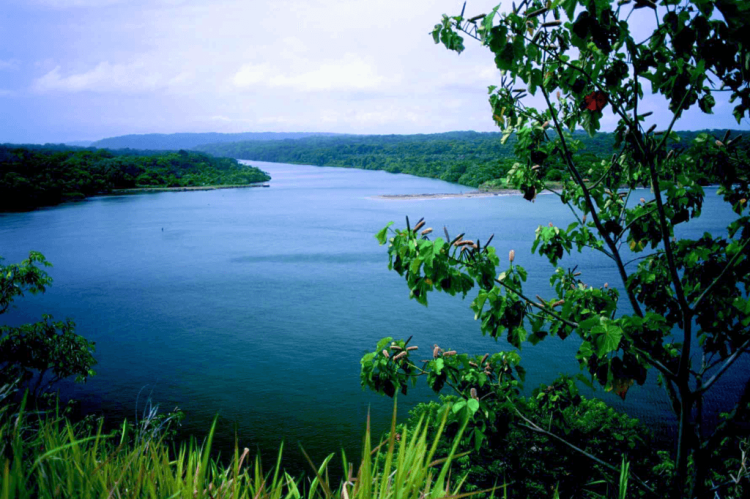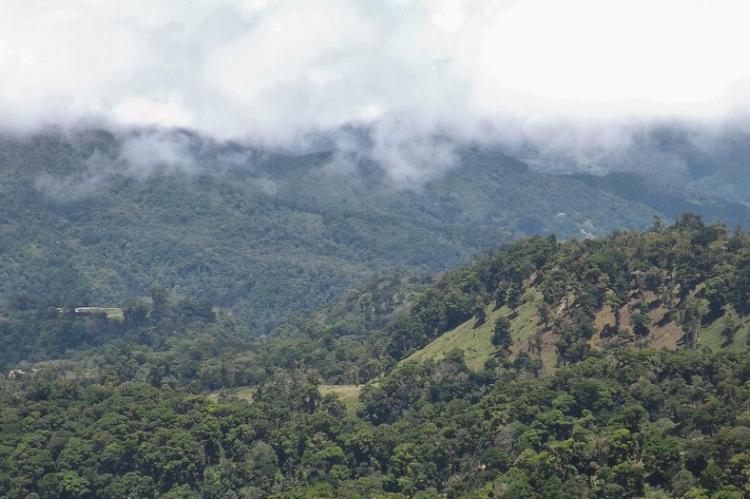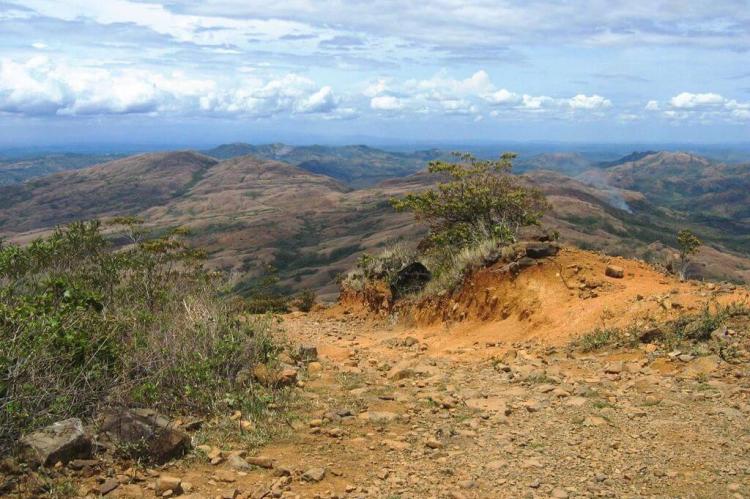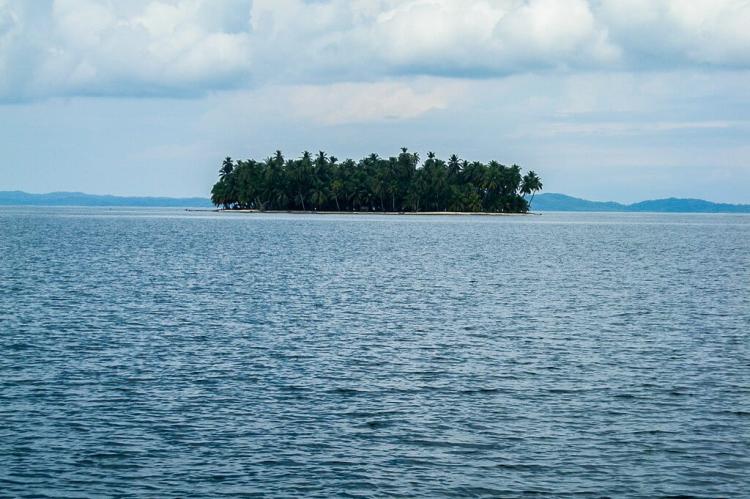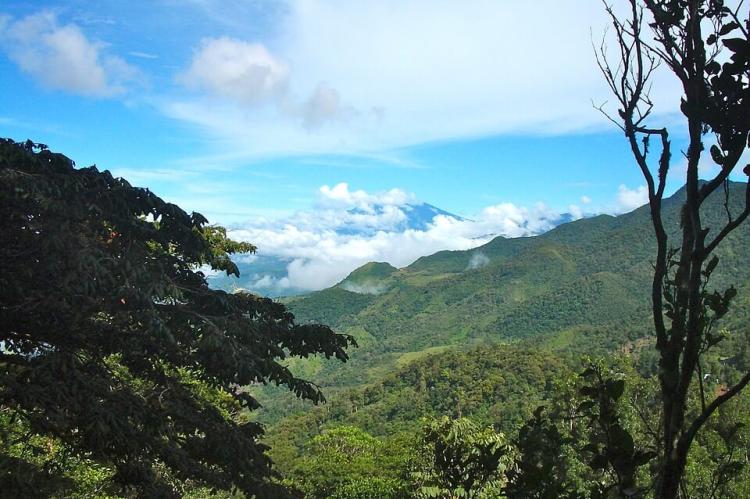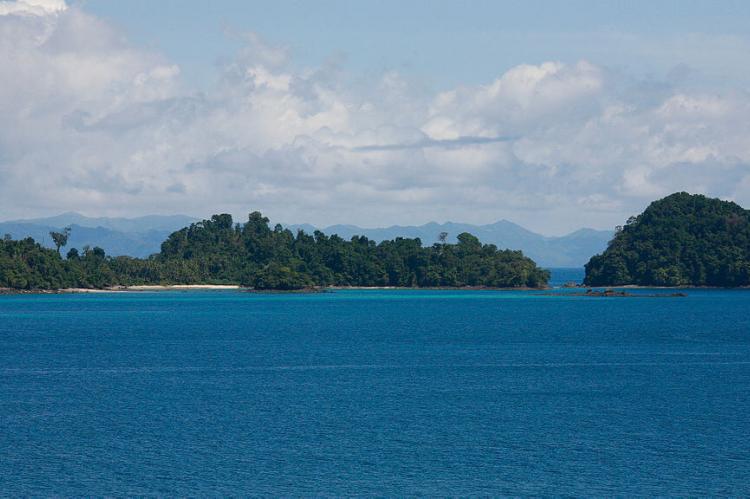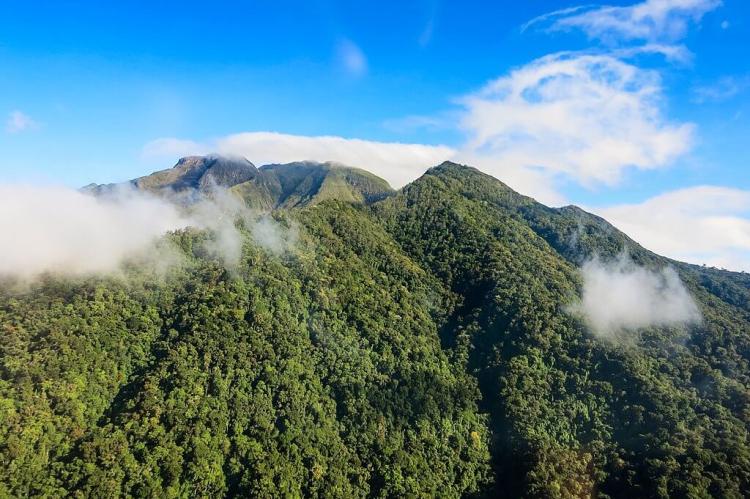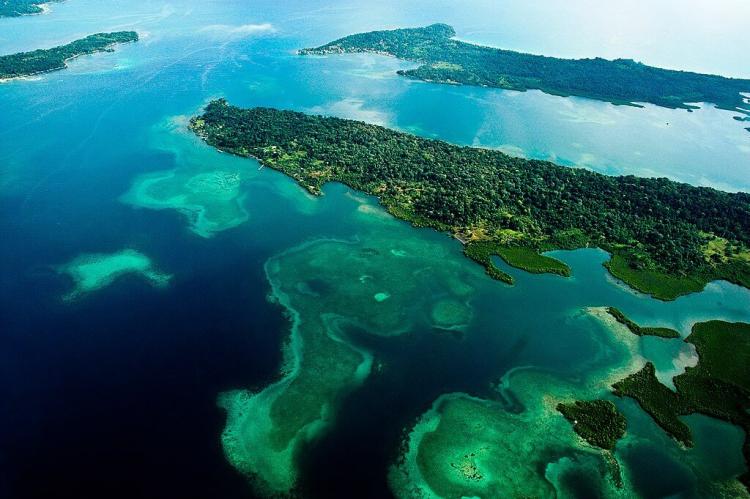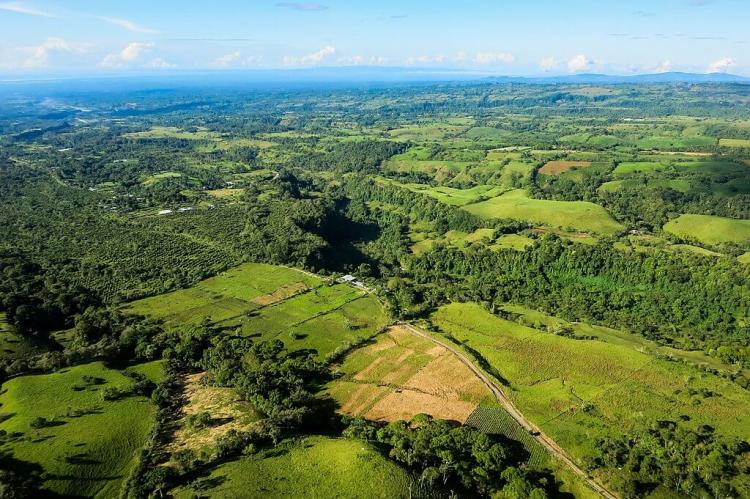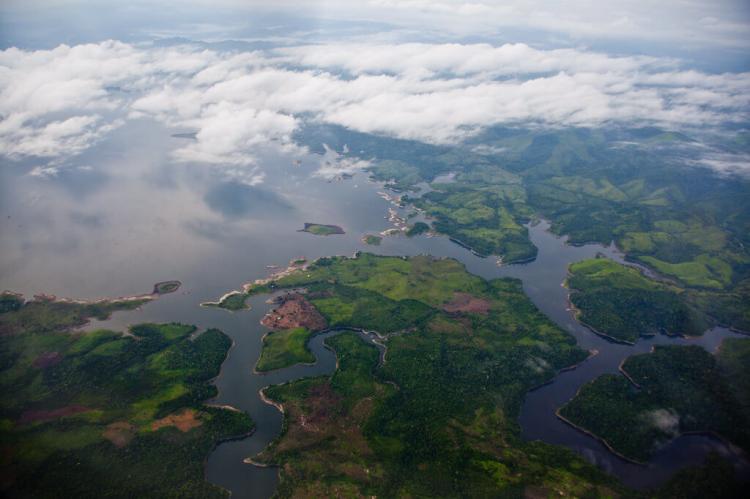Panama: Natural Landscape
Panama is the southernmost country of Central America, located on the elongated S-shaped Isthmus of Panama, the narrow land bridge that connects North and South America. Its landscape comprises three major physical regions: mountains, coastal lowlands, and archipelagos.
The Natural Landscape of Panama
Panama, the southernmost country in Central America, shares its borders with Costa Rica to the northwest and Colombia to the southeast, with the Caribbean Sea to the north and the Pacific Ocean to the south. Nestled on the elongated S-shaped Isthmus of Panama, a narrow land bridge connecting North and South America, the nation is globally recognized for the Panama Canal. This crucial waterway traverses its midsection.
With a Pacific coastline stretching approximately 1,225 kilometers (760 miles) and a Caribbean coastline spanning about 760 kilometers (470 miles), Panama's sandy beaches seamlessly transition into lush forested lowlands, gradually ascending into the foothills of the interior mountain ranges.
Biodiversity
Strategically positioned at the crossroads of North and South America, Panama stands out as a haven of remarkable biodiversity. Its geographical diversity, encompassing Atlantic and Pacific coastlines and a medley of expansive forests, fosters unique ecosystems, nurturing diverse flora and fauna.
Recognized as the 25th most biodiverse country globally by the Global Biodiversity Index, Panama boasts an impressive catalog, including 885 bird species, 228 amphibian species, 1,428 fish species, 252 mammal species, 279 reptile species, and a staggering 10,462 vascular plant species.
Conservation
In its commitment to environmental stewardship, Panama has implemented rigorous conservation measures to protect endangered and threatened species, such as jaguars, sea turtles, and the elusive harpy eagle. A network of protected areas, comprising national parks, wildlife refuges, and reserves, has been established, with notable examples like Coiba National Park, Darien National Park, and Baru Volcano National Park.
Despite these proactive conservation efforts, challenges persist, including habitat loss, illegal wildlife trade, and the impacts of climate change. Striking a delicate balance between economic development and conservation remains a complex undertaking. Nevertheless, the country's dedication to preserving its natural heritage resonates through robust conservation programs and a protected area network, pivotal in global biodiversity conservation endeavors.
Climate
Panama boasts a tropical climate characterized by consistently warm temperatures and elevated humidity throughout the year. Regional nuances influence the weather, with the Caribbean coastal region typically experiencing higher temperatures and humidity than the Pacific coastal region. The central highlands offer a cooler and less humid climate.
The climate manifests in two distinct seasons: the wet season and the dry season. From May to December, the wet season prevails, bringing substantial rainfall that averages over 2,000 mm (79 in). The Caribbean coastal region, particularly in Bocas del Toro Province, witnesses the heaviest precipitation. Conversely, the dry season spans January to April, featuring reduced rainfall and lower humidity.
Panama faces the threat of extreme weather events, including hurricanes and tropical storms. These occurrences can potentially inflict significant damage on infrastructure, crops, and communities, displacing residents from their homes.
Volcanism
Panama, while not as renowned for its volcanism as some neighboring Central American nations, has a historical backdrop of volcanic activity. Positioned in proximity to the boundaries of the Caribbean Plate and the Nazca Plate, the country has witnessed volcanic phenomena, with most such activity occurring millions of years ago.
Panama lacks active volcanoes, yet certain volcanic features are categorized as dormant. Examples include El Valle de Antón and El Barú (Volcán Barú), which, although inactive in recent history, retain the potential for future activity over extended timelines.
In exploring Panama's geothermal potential, the nation has considered tapping into the energy derived from its volcanic features. Despite the absence of large-scale geothermal power plants, the country's geothermal resources are promising candidates for future renewable energy initiatives.
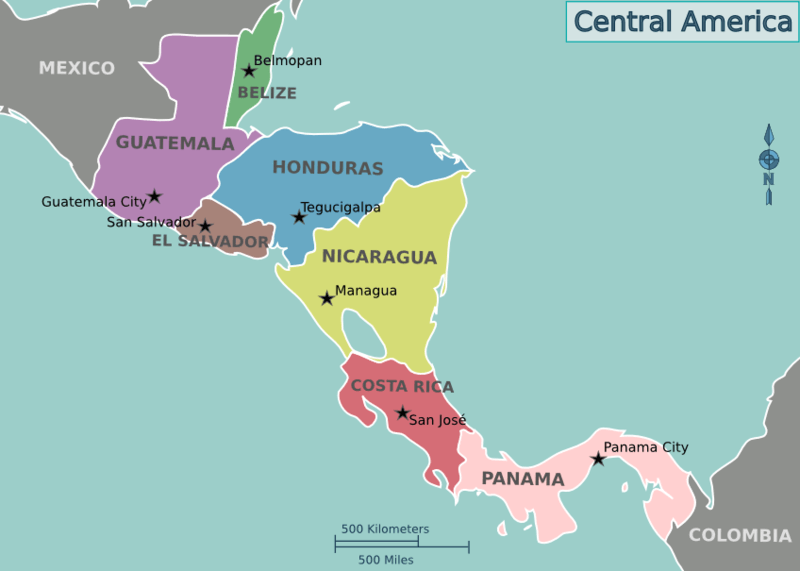
Location map of the countries of Central America
Natural Geography of Panama
Physical Regions
Panama's diverse landscape is divided into three primary physical regions:
-
Mountains: Panama has two main mountain ranges spanning its center, from east to west, almost covering the entire country. These ranges include:
- Tabasará Mountains (Cordillera Central): Located in the west.
- Cordillera de San Blas: Situated in the east.
These mountain ranges form the Continental Divide, creating a natural boundary between the Pacific and Caribbean slopes. A lower mountain arc is present along the southern coast, appearing in distinct segments. The Panama Canal is strategically situated in the central saddle, separating the two main mountain ranges.
The country's apex is marked by Volcán Barú (Volcán de Chiriquí), a dormant volcano reaching an elevation of 3,475 m (11,400 ft). It offers breathtaking panoramic views as the highest point in Panama and the 12th highest peak in Central America.
-
Coastal Lowlands: Extending over 85% of the total land area, Panama's coastal lowlands exhibit significant variations between the Pacific and Atlantic coastlines. The Pacific side is characterized by a more indented and irregular coastline and a broader continental shelf. Key features include:
- Chiriquí Lagoon: The largest embayment on the Caribbean side.
- Azuero Peninsula: Jutting southward to define the Gulf of Panama.
- Chiriqui Gulf: Initiating the Atlantic lowlands in the west.
The Pacific and Atlantic lowlands combine forested areas and farmland, contributing to the country's rich biodiversity. Moving east, Darien Province stands as a sparsely populated region, boasting rainforests and swamps. The formidable Darien Gap, bordering Colombia, presents an almost impenetrable jungle, discouraging extensive human habitation.
-
Archipelagos: Panama's geographical diversity includes various archipelagos scattered along its coastlines. Notable examples include:
- Bocas del Toro Archipelago: Off the Caribbean coast.
- Pearl Islands: Situated in the Gulf of Panama.
- San Blas Islands: Dotting the Caribbean side.
These archipelagos contribute to the country's maritime charm, offering pristine beaches, vibrant coral reefs, and unique ecosystems.
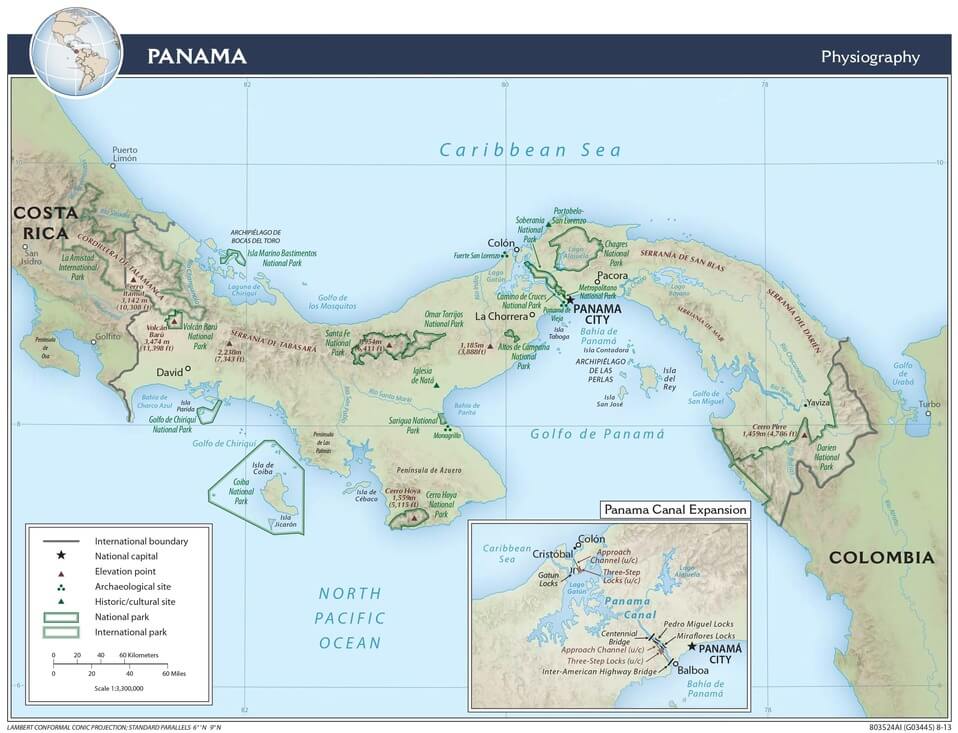
Panama physiographic map
Islands and Archipelagos
More than 1,600 islands are off Panama's northern (Caribbean) and southern (Pacific) coasts. The northern coastline is lined by hundreds of small islands that form the Bocas del Torro Archipelago near the Costa Rican border and the San Blas Archipelago to the east near Colombia.
Most of Panama's islands lie off its Pacific coast, where the waters are extraordinarily shallow. They include the Pearl Islands (Perlas Archipelago) and the islands of Taboga, Cébaco, Parida, Jicarón, and Coiba. Coiba Island is the largest island in Central America and is protected by Coiba National Park, a World Heritage site.
See more: Islands and Archipelagos of Panama
Bodies of Water
Panama hosts diverse water bodies that greatly influence its geography, ecology, and economy. From the vast Pacific and Caribbean coastlines to the famous Panama Canal and numerous rivers and lakes, the country's waterways play a crucial role in shaping its identity as a vital maritime crossroads.
See more: Water Bodies of Panama
Administrative Divisions
Administratively, Panama is divided into ten provinces, and four indigenous regions (comarcas) are considered equivalent to a province. The head of each province is the governor, appointed by the President.
See more: Cultural Landscape of Panama
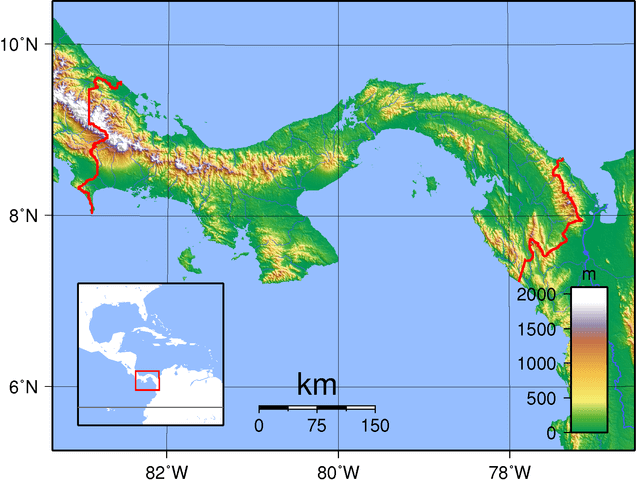
Topographic map of Panama
Natural Regions
Panama is covered in tropical forests and wetlands and possesses Atlantic and Pacific coastal marine areas.
Ecological Regions
The following is a list of terrestrial ecoregions in Panama, as defined by the World Wide Fund for Nature (WWF). Panama is in the Neotropical realm. Ecoregions are classified by biome type - the major global plant communities determined by rainfall and climate.
Tropical and subtropical moist broadleaf forests
-
Eastern Panamanian montane forests
-
Isthmian-Atlantic moist forests
-
Isthmian-Pacific moist forests
Tropical and subtropical dry broadleaf forests
- Panamanian dry forests
Montane grasslands and shrublands
Mangroves
-
Bocas del Toro-San Bastimentos Island-San Blas mangroves
-
Gulf of Panama mangroves
-
Moist Pacific Coast mangroves
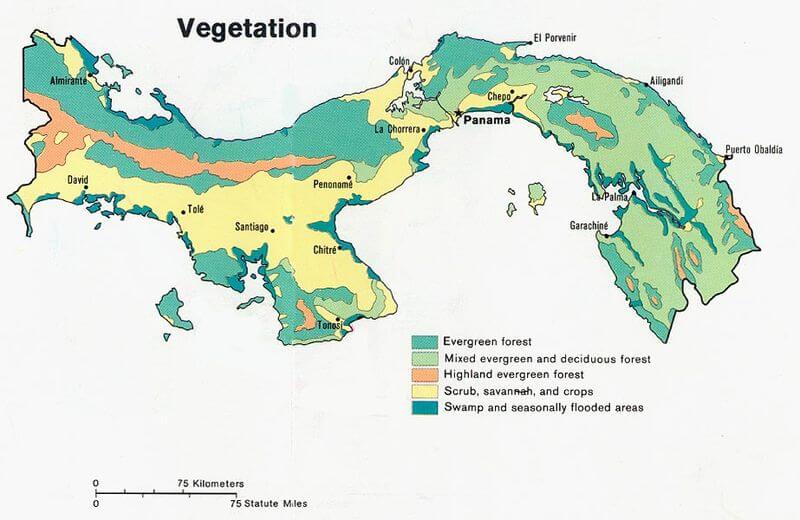
Vegetation map of Panama
